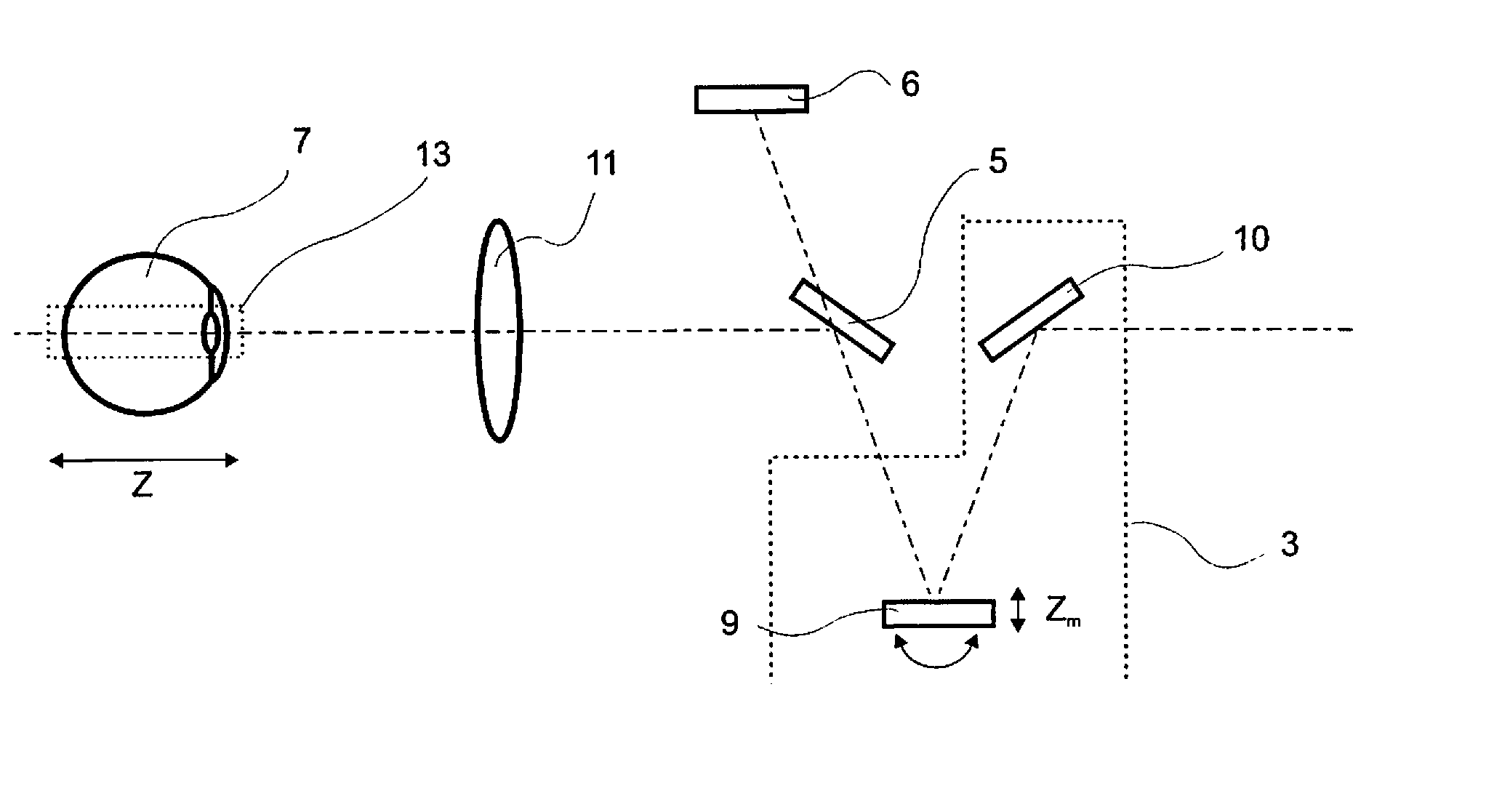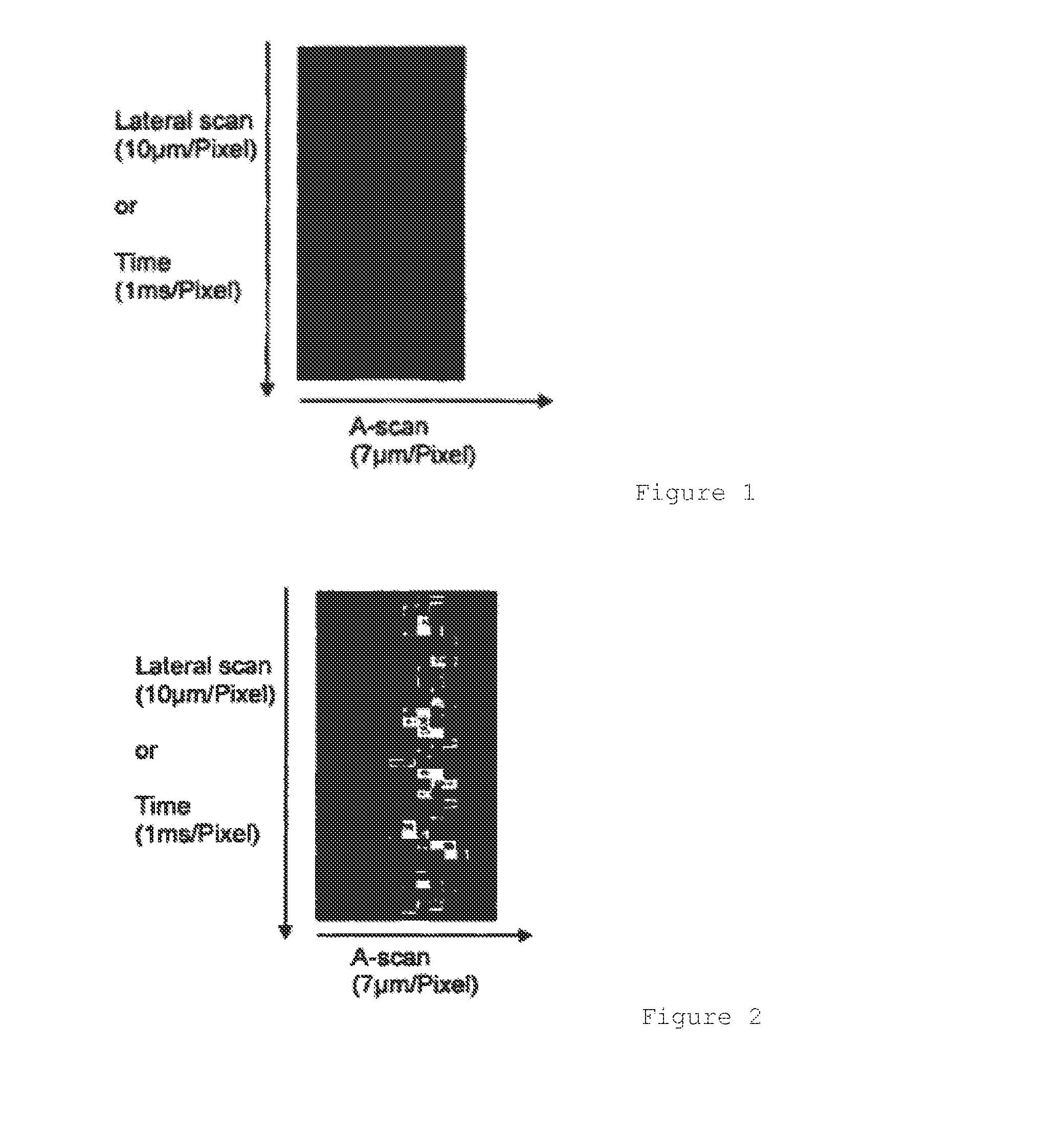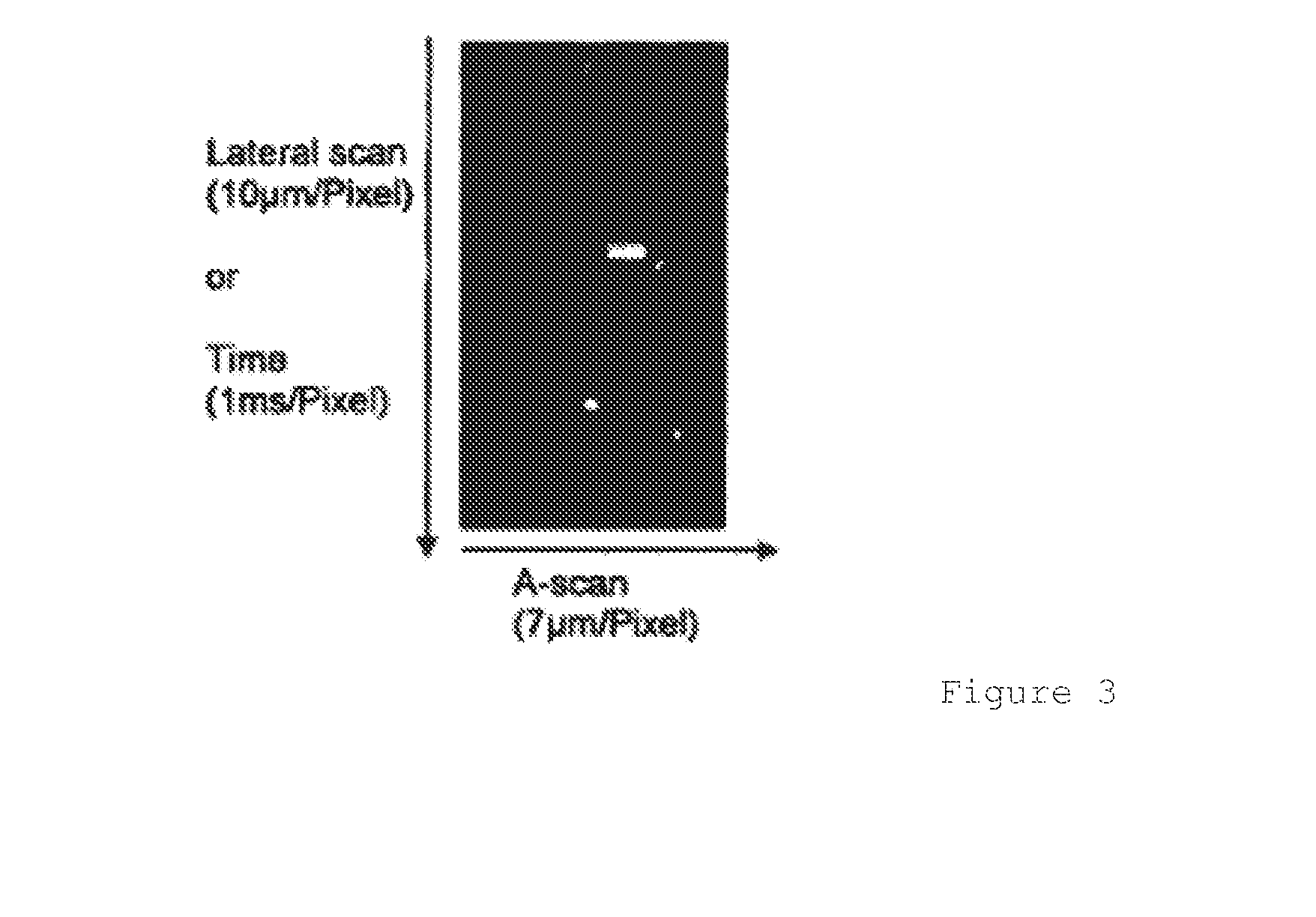Oct-based ophthalmological measuring system
a technology oct, which is applied in the field of ophthalmological measuring system, can solve the problems of affecting the generation of accurate measured values, affecting the accuracy of measurement results, etc., and both variants are very cost-intensiv
- Summary
- Abstract
- Description
- Claims
- Application Information
AI Technical Summary
Benefits of technology
Problems solved by technology
Method used
Image
Examples
Embodiment Construction
[0044]The OCT-based ophthalmological measuring system according to the invention comprises a light source with a spectral centroid λ, an interferometric measuring arrangement 2, a scanner system 3 which, in addition the lateral deflection 4 of the sample beam, also causes axial modulations with a frequency f in the sample 7 arm, and a control and evaluation unit 8. Here, a scanner system 3 is to be understood as systems which perform a lateral two-dimensional deflection of the sample beam with the aid of one or even two separate mirror elements 4, and which in particular can have axial modulation amplitudes zM>>λ / 2.
[0045]As a measuring system, a swept-source OCT system is used here. The sweep time dλ / dt of the tunable light source is adapted to the targeted maximum measuring depth z 13 and the frequency f of the axial modulation of the scanner system 3.
[0046]The targeted maximum measuring depth z 13 is determined in ophthalmology by the length of the eyes to be measured, which lengt...
PUM
 Login to View More
Login to View More Abstract
Description
Claims
Application Information
 Login to View More
Login to View More - R&D
- Intellectual Property
- Life Sciences
- Materials
- Tech Scout
- Unparalleled Data Quality
- Higher Quality Content
- 60% Fewer Hallucinations
Browse by: Latest US Patents, China's latest patents, Technical Efficacy Thesaurus, Application Domain, Technology Topic, Popular Technical Reports.
© 2025 PatSnap. All rights reserved.Legal|Privacy policy|Modern Slavery Act Transparency Statement|Sitemap|About US| Contact US: help@patsnap.com



